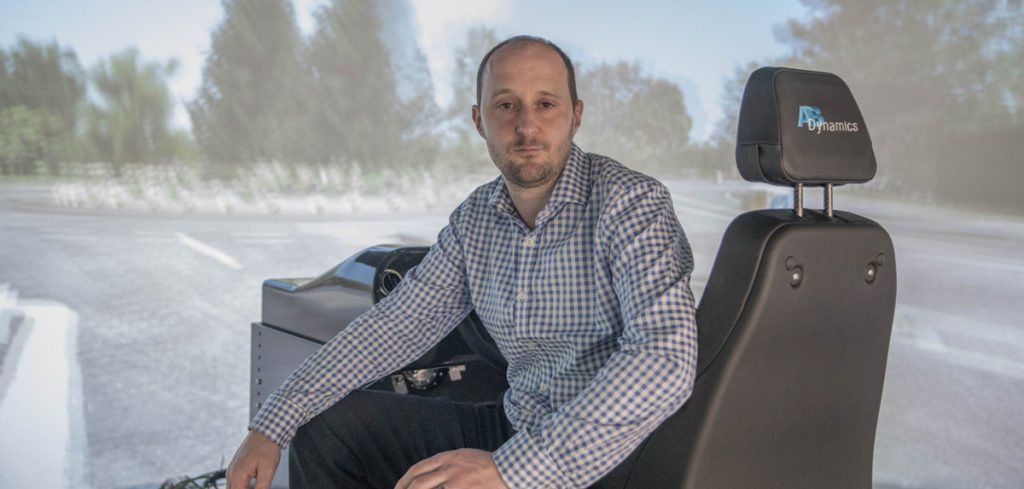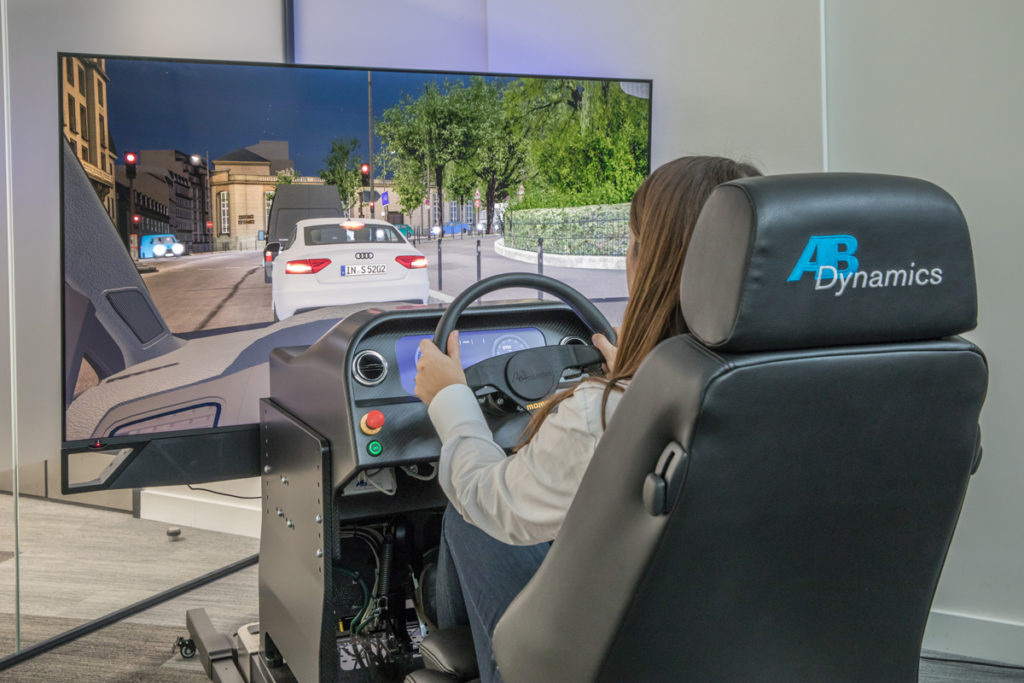Static driving simulators are the starting point for most organizations that want to dip their toes into the world of driver-in-the-loop testing. While large (expensive) multi-degree-of-freedom units are the gold standard, for many tasks a static simulator will provide useful engineering data.
With this in mind, long-time simulator and testing specialist AB Dynamics, based in the UK, has released its aVDS-S static driving sim. The company says it brings unprecedented levels of driver immersion to this sector of the market and provides a cost-effective way to develop vehicle systems and test complex ADAS scenarios.
Like several other companies in the market, ABD has utilized many components from its higher level, dynamic systems, such as the driver console and the same brake, steer and seat haptic feedback systems that are used in the dynamic aVDS.
Dr Adrian Simms (above), AB Dynamics’ business director – laboratory test systems, explained, “The high-fidelity steering actuator, developed from our track testing product technology, enables the output from steering models to be faithfully recreated. The direct drive, low-friction, perceptibly zero cogging, high-bandwidth motor technology has the same continuous torque rating and peak torque capability as the system used on our aVDS.”
The aVDS-S also utilizes the same rFpro driving environment and aVDS software as other AB Dynamics simulator products. This means the models and scenarios used on the aVDS-S may be seamlessly copied and driven on any other AB Dynamics driving simulator.
A feature of the aVDS software is that it is part of AB Dynamics’ integrated software toolchain which facilitates the sharing of test scenarios and data between AB Dynamics simulator and track test products, using a common interface. This enables real-world correlation and validation of virtual-world test results. To validate virtual test results using track test equipment, the toolchain allows customers to copy and paste even the most complex scenarios from the virtual world to the real world, and vice-versa.
Commenting on the competitive cost of the aVDS-S and its usability, Simms noted, “Through aVDS-S, organizations that do not yet have the absolute requirement, or the associated budget, for a highly advanced dynamic driving simulator can still realize many of the benefits of meaningful human involvement early in the vehicle development process.”



